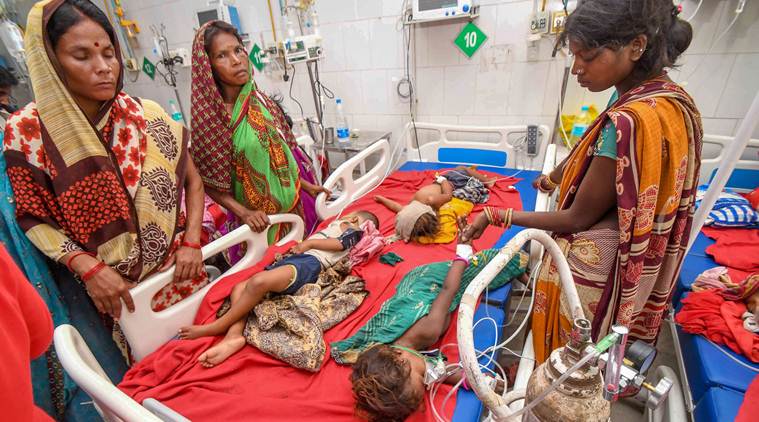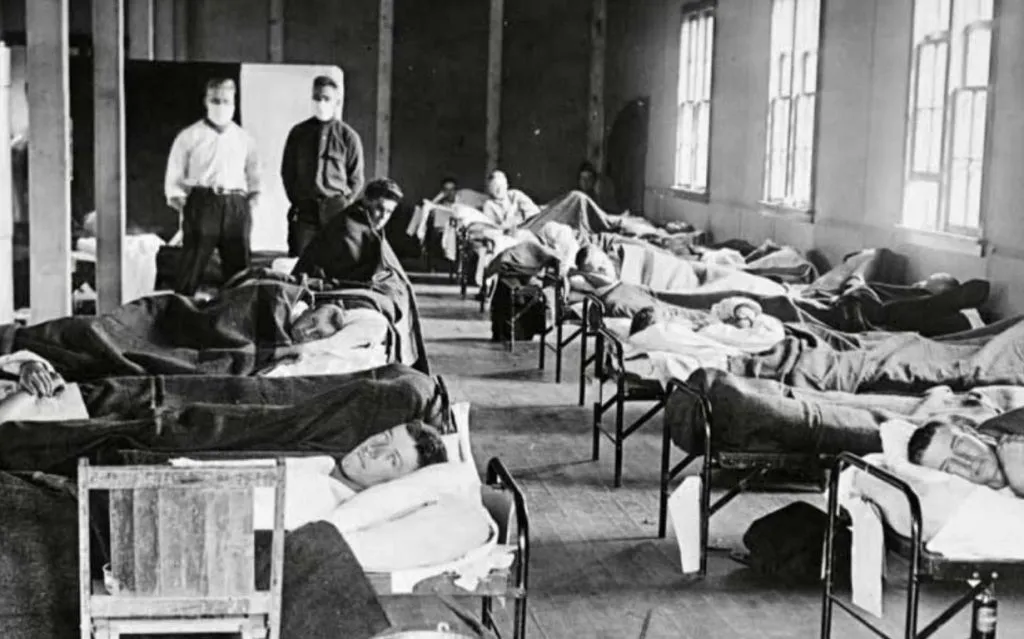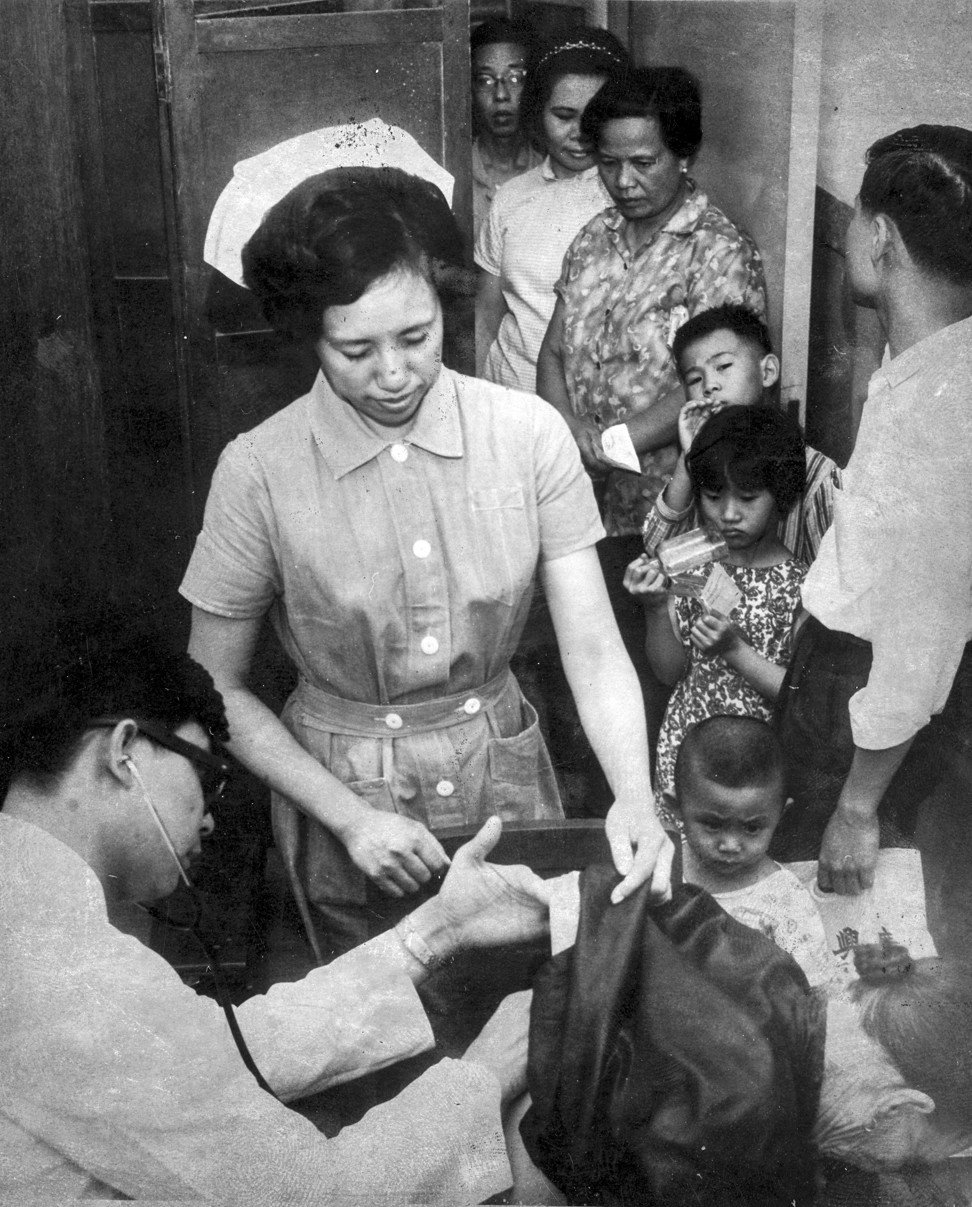1. COVID-19 (coronavirus): 2020–early 2024

Originating from Wuhan, China, and spreading worldwide, COVID-19, caused by the SARS-CoV-2 virus, emerged as a global pandemic and significantly impacted India. The nation experienced millions of infections and deaths, with the healthcare system being overwhelmed at times. Economic disruptions, lockdowns, and social distancing measures affected daily life and the economy.
- Response:
- Mass Vaccination: Rapid development and distribution of vaccines, with a large-scale vaccination drive to immunise the population.
- Lockdowns and Social Distancing: Implementation of strict lockdowns, social distancing measures, and mask mandates to curb the spread of the virus.
- Healthcare Strengthening: Expansion of healthcare facilities, establishing COVID-19 care centres, and ramping up the production of medical supplies, including oxygen and ventilators.
- Public Awareness: Widespread public health campaigns to promote hygiene, vaccination, and precautionary measures through various media channels.
2. Avian Influenza (bird flu): 2019, 2024

Various strains, particularly H5N1 and H5N8, have caused multiple outbreaks of avian influenza, primarily affecting poultry but with occasional human infections. It led to significant culling of poultry to prevent the spread, economic losses in the poultry industry, and health risks associated with human infections. The WHO has also detected a case of human infection with bird flu, caused by the H9N2 virus, in a four-year-old in West Bengal, India. This is the second documented case in India, following the first reported case in 2019.

- Response:
- Surveillance and culling: regular surveillance of poultry farms and wild birds, rapid reporting of outbreaks, and culling of affected birds to contain the virus.
- Biosecurity Measures: Implementation of strict biosecurity protocols in poultry farms to prevent the introduction and spread of the virus.
- Public Awareness: educated farmers and the public about the symptoms of avian influenza and the importance of reporting sick or dead birds promptly.
3. Nipah virus: 2018

The Nipah virus is a zoonotic pathogen that can be transmitted from animals to humans. The first recognised outbreak occurred in Malaysia, which also affected Singapore, where most human infections were linked to direct contact with sick pigs. In subsequent outbreaks in Bangladesh and India, it is thought that the consumption of fruits or fruit products contaminated with urine or saliva from infected fruit bats was the primary source of infection. There have been several outbreaks of this virus, the most recent one in 2018 in Kerala, leading to high mortality rates and significant public health concerns, as it had a high fatality rate of 40% to 75%, according to the World Health Organisation (WHO), thereby causing severe respiratory infection and fatal encephalitis.
- Response:
- Coordination: Multiple central multi-disciplinary teams were mobilised to support the state and district administration in containment and mitigation measures.
- Surveillance and Contact Tracing: Active house-to-house surveillance was carried out in containment zones. High-risk contacts were identified and quarantined, with ongoing follow-up exercises, movement restrictions, social distancing, and mandatory mask-wearing in public spaces.
- Laboratory Testing: Laboratory testing of suspected cases and environmental and animal samples was conducted at various labs.
4. Encephalitis: 2017

A viral brain infection transmitted by mosquitoes, which particularly affects children, leads to severe neurological disease and has experienced recurring outbreaks in states like Uttar Pradesh (Gorakhpur in 2017) and Bihar (Muzaffarpur in 2019). There has been an increase in the number of cases where several children have died from encephalitis, specifically Japanese encephalitis (JE) and acute encephalitis syndrome (AES), primarily caused by mosquito bites, causing inflammation of the brain, resulting in long-term physical disabilities and, in some cases, death.
- Response:
- Vaccination: large-scale vaccination campaigns, particularly in high-risk areas, to protect children and reduce the incidence of the disease.
- Mosquito Control: Measures to reduce mosquito populations, including fogging and the elimination of breeding sites.
- Healthcare Infrastructure: Improved medical facilities for early diagnosis and treatment, including supportive care for affected individuals.
5. H1N1 Influenza (swine flu): 2014–2015
.jpg)

A global outbreak of the H1N1 influenza virus, commonly known as the swine flu, affected many countries, including India. States like Gujarat, Rajasthan, Delhi, Maharashtra, and Telangana were the most affected. This led to numerous deaths and hospitalisations in India, as India reported at least 12,963 affected cases and 31 deaths in February 2015 and approximately 33,000 cases and 2,000 deaths nationwide in March 2015, as reported by India’s Health Ministry, thereby prompting the Indian government to launch public awareness campaigns.
- Response:
- Vaccination: distribution of H1N1 vaccines to protect vulnerable populations.
- Public Health Measures: Enhanced surveillance, isolation of infected individuals, and public health advisories to limit the spread of the virus.
- Treatment Protocols: Use of antiviral medications and setting up special flu clinics to manage and treat infected patients.
6. Dengue: 1996–Present

Dengue fever, or dengue shock syndrome, transmitted by Aedes mosquitoes, first emerged in India in 1996, primarily in and around Delhi. The cause was confirmed as dengue virus type 2 through virus cultivation and indirect immunofluorescence with type-specific monoclonal antibodies, signalling a significant resurgence of dengue virus infection. Since then, the virus has continued to cause recurring outbreaks, particularly during monsoon seasons, with an estimated 100–400 million infections occurring annually (WHO). While many dengue infections are asymptomatic or produce only mild illness, the virus can occasionally lead to more severe cases and even death, highlighting the importance of continued public health efforts to combat this significant public health threat.
- Response:
- Mosquito Control: Fogging, use of insecticides, and elimination of mosquito breeding sites through community cleanup drives.
- Public Awareness: Campaigns to educate the public about preventive measures, symptoms, and the importance of avoiding mosquito bites.
- Healthcare: strengthening healthcare facilities to manage dengue cases, including the provision of supportive care such as hydration and monitoring of severe cases.
7. Smallpox: 1974

A highly contagious and deadly viral disease, smallpox, led to an average of 3 out of every 10 people who got it dying, as per the CDC. It was caused by two virus variants: Variola major and Variola minor. Smallpox has a history of occurring in outbreaks around the world, and it is not clear when it was first observed in India; however, in the early 1960s, 60% of all smallpox cases in the world were reported in India, and this strain of the virus appeared to be more contagious, according to the University of Michigan. As the World Health Organisation had begun laying plans for a mass campaign to eradicate smallpox around the world, it led to the official eradication in 1980, as confirmed by the WHO.
- Response:
- Mass Vaccination: Intensive vaccination campaigns under the World Health Organisation’s Smallpox Eradication Programme reach even remote areas.
- Surveillance and Containment: Identification and isolation of cases, and ring vaccination strategies to contain outbreaks.
- Public Health Campaigns: Educating the public about vaccination and the importance of reporting cases, ensuring widespread compliance.
8. Influenza (Hong Kong flu): 1968–1970
A highly contagious and deadly flu caused by the H3N2 strain of influenza originated in Hong Kong in July 1968 and spread across the world, resulting in approximately 1 to 4 million deaths globally. Also known as the flu pandemic, it was descended from the A(H2N2) influenza virus that caused the Asian Flu pandemic.
-
Response:
- Vaccination Campaigns: national influenza vaccination drives, including seasonal vaccination programmes, to ensure high coverage and immunity.
- Surveillance: active surveillance for influenza cases to detect and respond to outbreaks promptly.
- Public Health Initiatives: Collaboration with international organisations for vaccine development and distribution, including the World Health Organisation and the Centres for Disease Control and Prevention (CDC).
9. Cholera: 1961–1975

Vibrio cholerae, a type of bacterium, has caused seven cholera pandemics since 1817. In 1961, the El Tor strain of the Vibrio cholerae bacterium caused the seventh cholera pandemic when it emerged in Makassar, Indonesia. Within five years, the virus spread to other parts of Southeast Asia and South Asia, reaching Bangladesh in 1963 and India in 1964. In India, researchers have observed in academic papers that Kolkata’s climate and location in the Gangetic Delta, along with poor water sanitation practices, make the city a hotbed for cholera, and this pandemic was no different.
- Response:
- Water Sanitation: Improvements in water quality and sanitation infrastructure, including the provision of clean drinking water.
- Public Health Measures: Education on hygiene practices, such as handwashing and safe food handling, to prevent cholera transmission.
- Medical Response: Treatment centres for rehydration therapy and antibiotics to manage and treat infected individuals.
10. Spanish Flu: 1918–1920

During the 1918 influenza pandemic, a deadly strain of avian influenza, also known as the Spanish flu, had a serious impact on India and other parts of the world. There are conflicting reports about the total number of deaths caused by this disease globally, but researchers estimate that the death toll was more than 50 million people. In India, it is believed that around 10–20 million people lost their lives due to the Spanish flu, which was brought to the region by Indian soldiers who were part of World War I. Records indicate that information about the dangers of the disease was disseminated through official government channels and word of mouth during the pandemic.
- Response:
- Limited Medical Interventions: Scarce medical resources and limited public health infrastructure at the time led to high fatalities.
- Public Health Measures: Isolation of patients, essential quarantine and social distancing, and limited travel
- Long-term Impact: highlighted the need for improved public health systems and infrastructure, leading to future advancements in epidemic response.
These epidemics have significantly influenced public health policies and practices in India, leading to enhanced surveillance, vaccination programmes, and overall improvements in healthcare infrastructure to better manage and prevent future outbreaks.

Rohit Malhotra is a medical expert and health journalist who offers evidence-based advice on fitness, nutrition, and mental well-being. His articles aim to help readers lead healthier lives.



